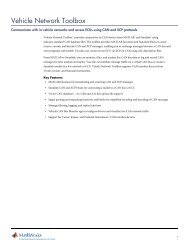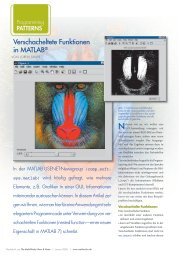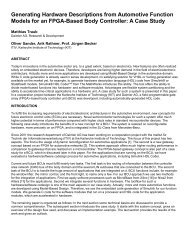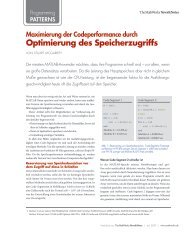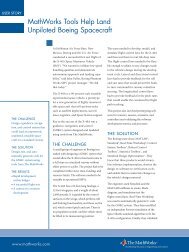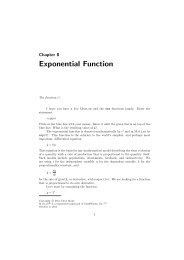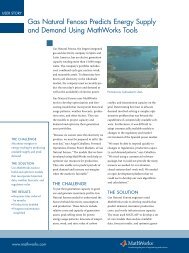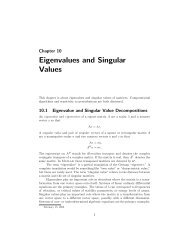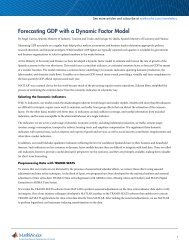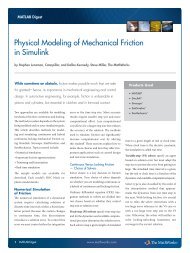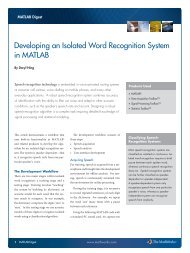Chapter 6. Quadrature - MathWorks
Chapter 6. Quadrature - MathWorks
Chapter 6. Quadrature - MathWorks
You also want an ePaper? Increase the reach of your titles
YUMPU automatically turns print PDFs into web optimized ePapers that Google loves.
<strong>6.</strong>3. quadtx, quadgui 5<br />
<strong>6.</strong>3 quadtx, quadgui<br />
The Matlab function quad uses the extrapolated Simpson’s rule in an adaptive<br />
recursive algorithm. Our textbook function quadtx is a simplified version of quad.<br />
The function quadgui provides a graphical demonstration of the behavior of<br />
quad and quadtx. It produces a dynamic plot of the function values selected by the<br />
adaptive algorithm. The count of function evaluations is shown in the title position<br />
on the plot.<br />
The initial portion of quadtx evaluates the integrand f(x) three times to<br />
give the first, unextrapolated, Simpson’s rule estimate. A recursive subfunction,<br />
quadtxstep, is then called to complete the computation.<br />
function [Q,fcount] = quadtx(F,a,b,tol,varargin)<br />
%QUADTX Evaluate definite integral numerically.<br />
% Q = QUADTX(F,A,B) approximates the integral of F(x)<br />
% from A to B to within a tolerance of 1.e-<strong>6.</strong><br />
%<br />
% Q = QUADTX(F,A,B,tol) uses tol instead of 1.e-<strong>6.</strong><br />
%<br />
% The first argument, F, is a function handle or<br />
% an anonymous function that defines F(x).<br />
%<br />
% Arguments beyond the first four,<br />
% Q = QUADTX(F,a,b,tol,p1,p2,...), are passed on to the<br />
% integrand, F(x,p1,p2,..).<br />
%<br />
% [Q,fcount] = QUADTX(F,...) also counts the number of<br />
% evaluations of F(x).<br />
%<br />
% See also QUAD, QUADL, DBLQUAD, QUADGUI.<br />
% Default tolerance<br />
if nargin < 4 | isempty(tol)<br />
tol = 1.e-6;<br />
end<br />
% Initialization<br />
c = (a + b)/2;<br />
fa = F(a,varargin{:});<br />
fc = F(c,varargin{:});<br />
fb = F(b,varargin{:});<br />
% Recursive call<br />
[Q,k] = quadtxstep(F, a, b, tol, fa, fc, fb, varargin{:});<br />
fcount = k + 3;




